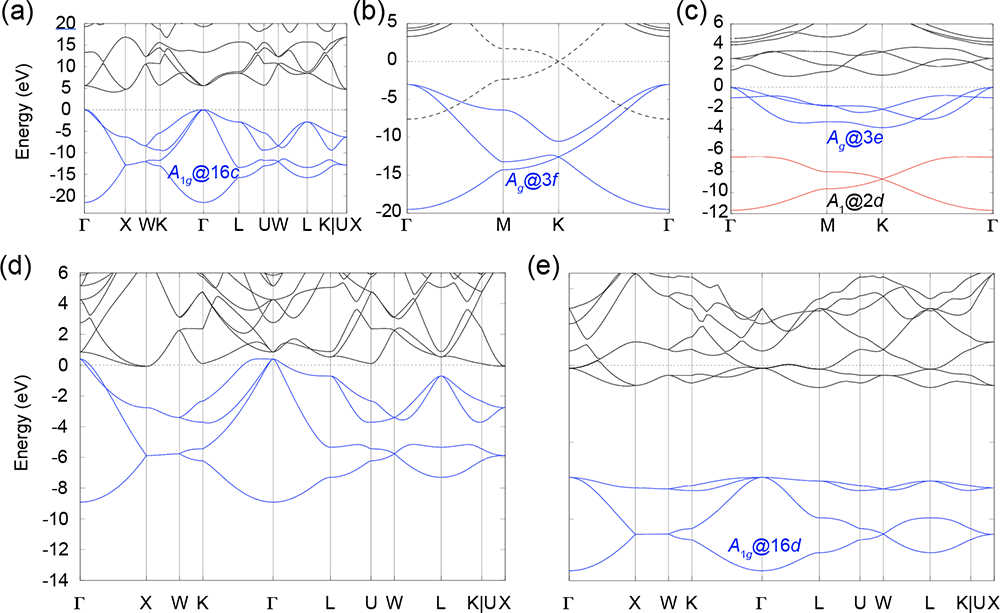Scientists discover a new class of unconventional materials
Date:06-05-2022 Print
First-principles calculations and electronic band theory play important roles in the prediction of topological materials. In recent years, important progress has also been made in the symmetry-based topological band theory, including the symmetry-indicator classification and topological quantum chemistry (TQC). They all rely on the fact that Bloch states in crystals can be labeled by irreducible representations (irreps) of space groups. TQC is based on a complete list of band representations (BR) induced by exponentially-localized orbitals. Thus, a set of bands that can not be decomposed into a sum of BR is topological. The TQC theory has built the direct connection between the irreducible representations in momentum space (physical concept) and local orbitals in real space (chemical concept). By using the topological band theories, people have built topological materials databases [1]. However, among topologically trivial compounds, we have overlooked a large amount of unconventional materials (The unconventional insulators was known as obstructed atomic limits). They possess the unconventional feature of the mismatch between the average electronic centers and the atomic positions. In fact, many interesting properties, such as low work function, strong hydrogen affinity, and electrocatalysis, can be expected in these unconventional materials.
Recently, the research group lead by Profs. Zhijun Wang, Hongming Weng, and Miao Liu from the Institute of Physics, Chinese Academy of Sciences found 423 unconventional materials via high-throughput calculations [2]. Since there are many "loose" electrons that are unbounded by any nuclei and centered at empty sites, they would become "active" electronic states on its surfaces, edges, and corners. Besides, they found that many unconventional materials have been widely studied as thermoelectric materials, electrides, solid-state hydrogen storage materials, electrocatalysts etc. Their interesting properties have to do with the unconventional feature of unusual charge distribution.

Figure 1. (a,b) The schematic of the band structures of compound AB. (c) The workflow of high-throughput screening procedure. (a) Conventional materials (atomic insulator), the charge center of occupied bands sits on the atomic position (Wyckoff position b). (b) Unconventional materials, the charge centers of occupied bands sit on Wyckoff positions b and c. Atoms A and B sit on the a and b Wyckoff positions, respectively. (c) high-throughput screening procedure based on the TQC theory. (Image by Institute of Physics)
In a conventional material, electrons are closely bounded by nuclei (Fig.1(a)). On the contrary, an unconventional material is supposed to have loose electrons, which do not bound to any nuclei (Fig.1(b)). By using the TQC, one can get the orbital feature of occupied bands, including the orbital centers and the symmetry properties. Thus, we present a high-throughput screening procedure as shown in Fig. 1(c): 1) obtain wavefunctions on several high-symmetry k points via first-principles calculations; 2) assign the irrpes by IRVSP; 3) get elementary band representations (eBR) and atomic band representations (aBR) by using pos2aBR; 4) decompose the irreps of band structure by eBR and aBR, respectively; 5) Find the essential BR The band structure of an unconventional insulator is supposed to a sum of eBR but not a sum of aBR. The essential BR is characterized by real-space invariants.

Fig 2. The band structures and band representations of (a) diamond, (b) graphene, (c) β-Sb, (d) LiAl, (d) LiAlH. The blue bands correspond to the essential band representations. (Image by Institute of Physics)
The band structures and essential band representations of some unconventional materials are presented in Figure 2. The covalent compounds and two-dimensional higher order topological insulators are unconventional insulators. In the searching results, they found some functional materials such as thermoelectric materials, solid-state hydrogen storage materials. These functional materials usually have the following properties: 1) The loose electron on the vacancy contribute to the surface states on the terminations. 2) Lower work function. 3) The electron is easily absorbed by the proton (H+), which benefits to hydrogen evolution reaction on the surfaces. 4) The "active" electronic states are good for electrocatalysis. Recently, the authors of Nature604, 653-656 (2022) have made a field-free Josephson diode using the superconductor NbSe2 and the unconventional insulator Nb3Br8 (or obstructed atomic limit) in the searching results.
So far, the magnetic topological quantum chemistry has been established also. In order to be friendly to the material calculations, the research group has developed many related programs on website (http://tm.iphy.ac.cn). 1) To obtain irreducible representations of electronic states IRVSP [3]. 2) To obtain the atomic band representations pos2aBR [4]. 3) To solve the eBR/aBR decomposition [2]. (4) To construct magnetic configurations pos2msg and search topological materials in 1651 magnetic space groups TopMat. These works provide a platform to study the electronic structures via first-principle calculations.
The unconventional materials provide a new idea for exploring various functional materials with practical application prospects. The related results have been published online in Science Bulletin under the title "Unconventional Materials: the mismatch between electronic charge centers and atomic positions" [2]. This work was funded by the National Natural Science Foundation of China, the Ministry of Science and Technology, the Beijing Natural Science Foundation of China, the Chinese Academy of Sciences and the Center for Materials Genome.
Contact
Institute of Physics
WANG Zhijun
Email: wzj@iphy.ac.cn
Key word:
Obstructed atomic limit, Band representations, Real-space invariants, Thermoelectric materials
Abstract:
We have discovered 423 unconventional compounds, including thermoelectronic materials, higher-order topological insulators, electrides, hydrogen storage materials, hydrogen evolution reaction electrocatalysts, electrodes, and superconductors. The diversity of these interesting properties and applications would be widely studied in the future.

